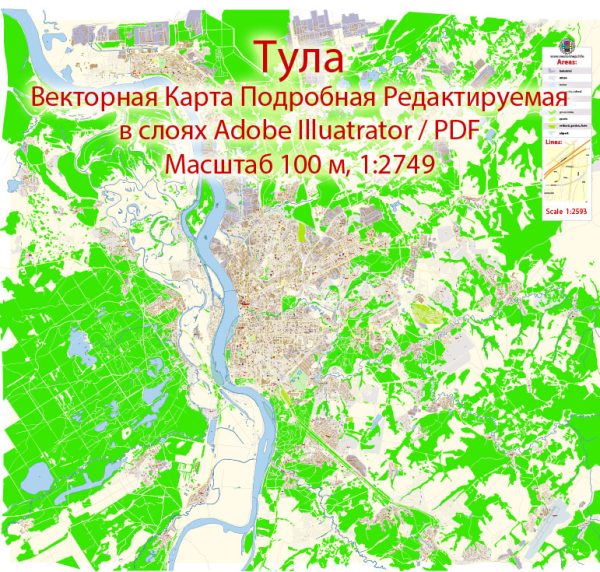Tula, located in western Russia, has a history of urban development that spans centuries. The city has played a significant role in Russian history and culture. Here is an overview of the key phases in Tula’s urban evolution:
Ancient and Medieval Periods:
Tula’s history dates back to the 14th century, and it was first mentioned in historical records in 1146. In the medieval period, Tula was a fortress town strategically located on the Oka River, serving as a defensive outpost against invasions from the south.
Mongol Rule:
During the Mongol rule in the 13th to 15th centuries, Tula was under the influence of the Golden Horde. It became an important trade and craft center, with blacksmithing and metalworking gaining prominence.
Ivan the Terrible and the Oprichnina:
In the 16th century, under the rule of Ivan the Terrible, Tula faced challenging times during the oprichnina, a period of political repression. The city suffered from economic decline and depopulation.
Weapon Manufacturing:
One of the most significant chapters in Tula’s history is its association with weapon manufacturing. In the 16th century, Ivan the Terrible established the Tula Arsenal, which became a major arms production center. Tula is renowned for its samovars (traditional Russian tea urns) and the Tula Arms Plant, which produced firearms for the Russian military.
Industrialization:
In the 19th century, Tula underwent industrialization, with the development of factories and manufacturing facilities. This period saw the city’s expansion and the growth of various industries beyond weaponry, including textile manufacturing and food processing.
Soviet Era:
The Soviet era brought further industrial development to Tula. The city became an important industrial and cultural center in the Soviet Union. The Tula Arms Plant continued to play a crucial role in the production of firearms. Tula also saw the establishment of educational and cultural institutions during this time.
World War II:
During World War II, Tula, like many other Soviet cities, played a vital role in the war effort. The city’s factories were converted for wartime production, contributing to the Soviet military’s needs.
Contemporary Period:
After the dissolution of the Soviet Union, Tula faced economic challenges as industries restructured. However, the city has worked to diversify its economy and preserve its cultural heritage. Tula has become a center for tourism, with historical sites, museums, and cultural events attracting visitors.
Architectural and Cultural Heritage:
Tula boasts a rich architectural heritage with historical buildings, churches, and monuments. Notable landmarks include the Tula Kremlin, an architectural ensemble with its cathedrals and defensive walls, and the Epiphany Cathedral.
Urban Renewal and Infrastructure Development:
In recent years, Tula has undergone urban renewal projects to modernize its infrastructure and enhance the quality of life for its residents. The city has also worked to promote tourism and preserve its historical sites.
Tula’s history of urban development reflects its strategic location, industrial prowess, and cultural significance. The city’s association with weapon manufacturing has left an indelible mark on its identity, and its historical and cultural heritage continues to be an important aspect of Tula’s appeal.


 Author: Kirill Shrayber, Ph.D.
Author: Kirill Shrayber, Ph.D.